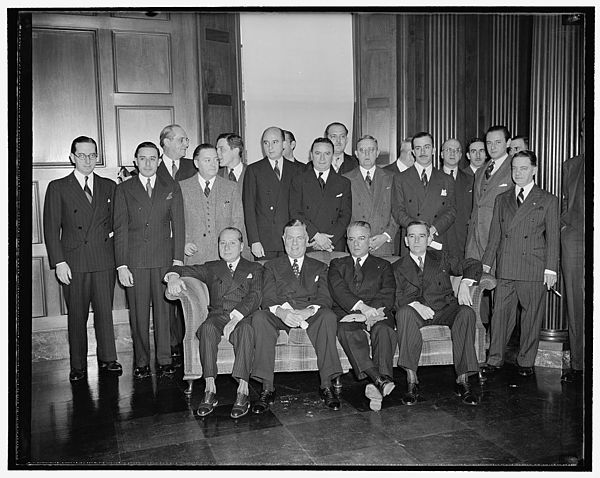Edward J. Noble
Videos
Page
Edward John Noble was an American broadcasting and candy industrialist originally from Gouverneur, New York. He co-founded the Life Savers Corporation in 1913. He founded the American Broadcasting Company when he purchased the Blue Network in 1943 following the Federal Communications Commission's (FCC) decree that RCA divest itself of one of its two radio networks.

Edward J Noble seated second from left at the Conference of Latin American Retailers
Gouverneur, New York
Videos
Page
Gouverneur is a town in St. Lawrence County, New York, United States. As of the 2020 census, the population was 6,551. That was down from 7,085 in 2010. The town is named after statesman and landowner Gouverneur Morris.

Lithograph of Gouverneur from 1885 by L.R. Burleigh with list of landmarks